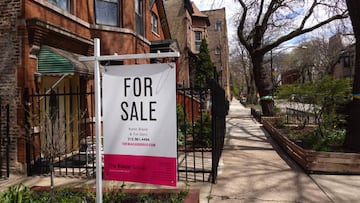US mortgage rates: how much have they risen since the beginning of the year?
Since the start of the year the average interest rate on the most popular US home loan has climbed at its fastest pace since 1994 as Fed tightens policy.

Purchasing a home in the US is becoming more and more costly as mortgage rates climb from their historic lows in 2021. The current 30-Year Fixed Rate Mortgage Average is 5.11 according to the St Louis Federal Reserve Bank is the highest since 2009.
Rates have risen as the Federal Reserve tightens monetary policy that sped the fastest economic recovery from a recession in US history. The breakneck recovery though has been followed by high inflation necessitating the central bank to implement rate hikes, the first time in more than three years.
Also see:
30-year mortgage rates up by over two percent
Mortgage rates began to inch up in the fall through to the end of the year from historic lows below 3 percent on average for 30-year home loans. That precipitated a hash of borrowers refinancing their loans to lock in the low rates before the Federal Reserve proceeded with its winddown of the ultra-loose fiscal stimulus program.
Since the beginning of the year, mortgage rates have shot up over two percent to over 5 percent, the highest since 2009. It’s the fastest rise in home borrowing costs since 1994.
At the end of last year, most estimates had the average 30-year mortgage rate hitting 4.5 percent by the end of 2022. However, the rapid spat of inflation and rising energy costs, exacerbated by Russia’s invasion of Ukraine, are pushing interest rates through the roof. It’s possible that they will keep rising to around six percent before topping out, lowering home sales forecasts.
Federal Reserve chairman Jerome Powell speaking at an IMF roundtable signaled a more hawkish stance towards fighting inflation going forward. He indicated that he sees a half-point rate hike when policymakers meet in May, a move the Fed rarely makes choosing to normal raise rates by 25 basis points. There are estimates of the central bank raising rates from between 2.5 and 3 percent by the end of the year.
Housing prices soared during the pandemic
The higher mortgage rates are being paid on top of rising prices on homes. The average US house sold for $428,700 in the first quarter of 2022 according to the St Louis Fed. That is an increase of almost 33 percent since the start of the covid-19 pandemic, nearly 16 percent higher in the last quarter alone. However, their colleagues at the Dallas Federal Reserve Bank don’t see the red-hot housing market leading to another bubble like the one that caused the Great Recession.
Housing prices have been driven higher as people have reassessed how and where they live due to the pandemic. Big cities have experienced an exodus of residents who were cooped up in their cramped spaces during the lockdowns and have sought more living space in the countryside. Also the shift to remote working has allowed people the freedom to live far away from the office.






